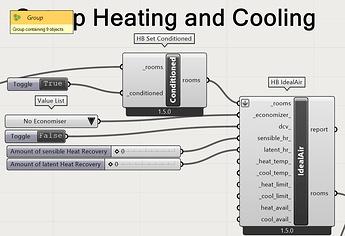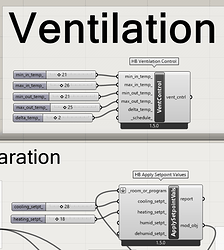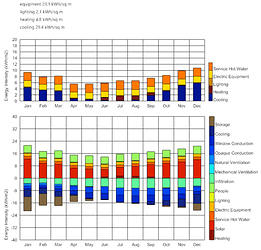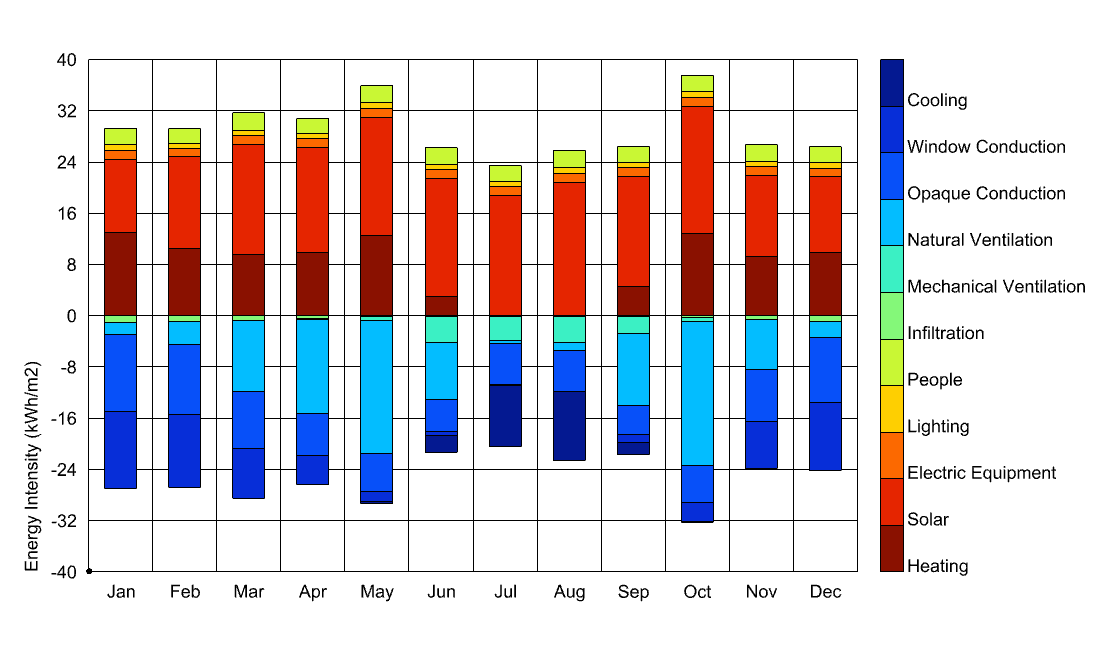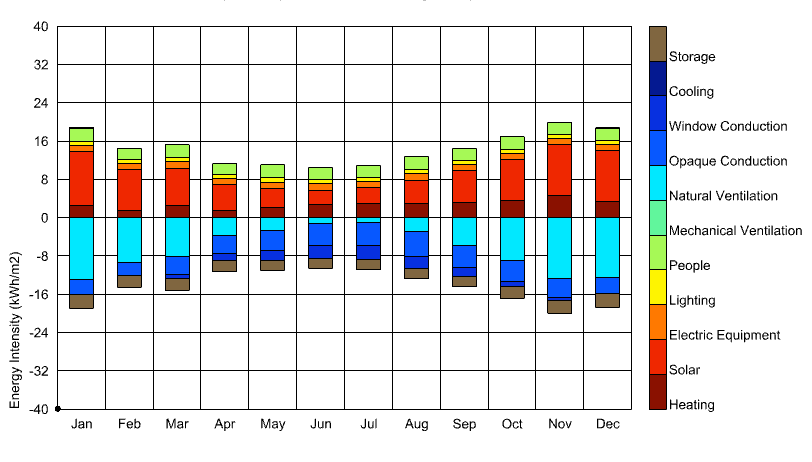@chris
I think I know where the problem is occuring, and a workaround solution, but frustratingly, can’t figure out the underlying cause of the problem.
Essentially, the problem seems to be that the total heat energy doesn’t equal the sensible/latent heat energy, in net. Specifically, the following relationship between EP’s ventilation energy outputs isn’t true:
\begin{align}
&\small{\text{ Zone Ventilation Sensible Heat Gain Energy } - \text{ Zone Ventilation Sensible Heat Loss Energy}}\\
+ &\small{\text{ Zone Ventilation Latent Heat Gain Energy } - \text{ Zone Ventilation Latent Heat Loss Energy}} \\
&\rule{16cm}{0.2pt} \\
&\small{\text{ Zone Ventilation Total Heat Gain Energy } - \text{ Zone Ventilation Total Heat Loss Energy}} \\
\end{align}
A subtle detail here is that the “Total” energy reported by EP reports a somewhat counterintuitive value, and should only be compared to the sensible/latent outputs in terms of net energy.
From the EP I/O Reference[1]:
Zone Ventilation Total Heat Gain Energy [J][LINK]
The total heat gain that occurs when the sum of Zone Ventilation Sensible Heat Gain Energy and Zone Ventilation Latent Heat Gain Energy > = the sum of Zone Ventilation Sensible Heat Loss Energy and Zone Ventilation Latent Heat Loss Energy.
Personally, I think this is a confusing use of the term “Total”. Anyway, this means the cumulative total heat gain over multiple timesteps won’t equal the sum of the cumulative sensible and latent gains. However, the difference between the gain and loss should always be equal, which is what I’m showing in the equation above, and also what HB uses, so this shouldn’t result in the error we’re seeing. To verify this, I’ve checked the detailed timestep, as well as the sub-timestep (i.e. HVAC) values for all of this in a pure EP model (no HB involved). Nothing adds up, so I agree, it definitely requires some clarification from the EP developers.
For a temporary solution to our original energy balance problem: you can simply sum up the sensible/latent gains/losses (the first part of the equation), and the energy balance should work as expected.
[1] Group – Airflow: Input Output Reference — EnergyPlus 22.1
